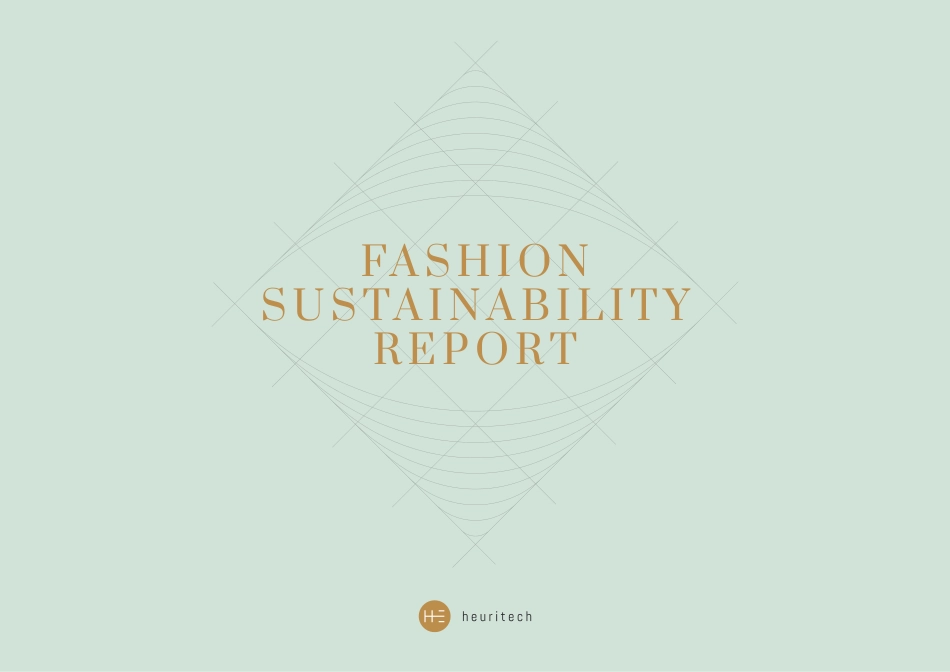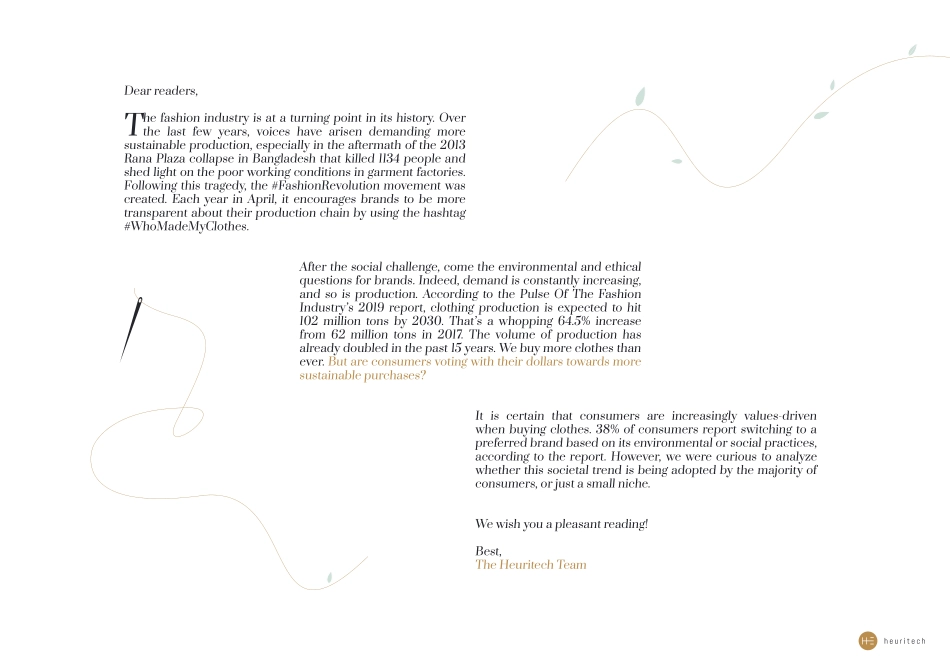FA S H I O NS U S TA I N A B I L I T YR E P O R TDear readers,T he fashion industry is at a turning point in its history. Over the last few years, voices have arisen demanding more sustainable production, especially in the aftermath of the 2013 Rana Plaza collapse in Bangladesh that killed 1134 people and shed light on the poor working conditions in garment factories. Following this tragedy, the #FashionRevolution movement was created. Each year in April, it encourages brands to be more transparent about their production chain by using the hashtag #WhoMadeMyClothes.After the social challenge, come the environmental and ethical questions for brands. Indeed, demand is constantly increasing, and so is production. According to the Pulse Of The Fashion Industry’s 2019 report, clothing production is expected to hit 102 million tons by 2030. That’s a whopping 64.5% increase from 62 million tons in 2017. The volume of production has already doubled in the past 15 years. We buy more clothes than ever. But are consumers voting with their dollars towards more sustainable purchases?It is certain that consumers are increasingly values-driven when buying clothes. 38% of consumers report switching to a preferred brand based on its environmental or social practices, according to the report. However, we were curious to analyze whether this societal trend is being adopted by the majority of consumers, or just a small niche.We wish you a pleasant reading!Best,The Heuritech Team400hashtags25millions postsHEURITECH ANALYSISIN FIGURESover the past 3 years on Instagram from consumers and influencers in the US and in Europe© Anna Rosa Krau©Melania Brescia@Vogue©David PD Hyde©Abe Frajndlich©sweetmutuals© MassCobWe ...



